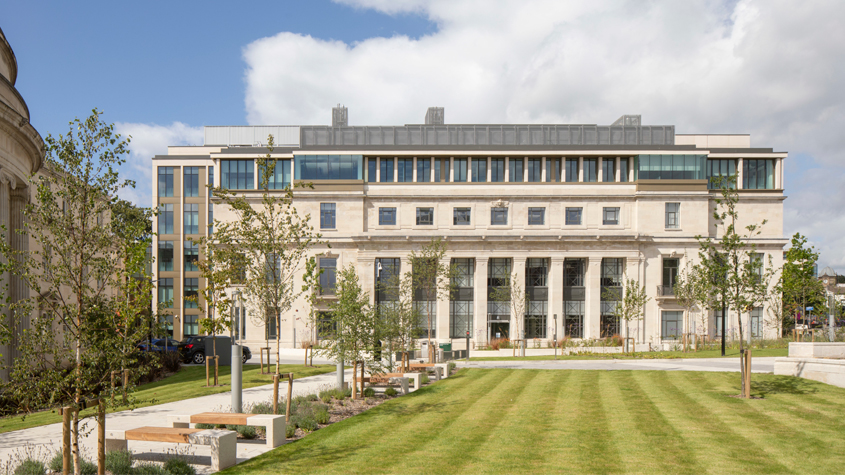Bragg Building wins Leeds Architecture Award
Last updated on 2 April 2025
The Sir William Henry Bragg Building won a Leeds Architecture Award in a ceremony at The Howard Assembly Room on the 1 November 2023.
Home to the University’s Faculty of Engineering and Physical Sciences, the building – designed by ADP Architects – won in the category for buildings that cost over £10 million, seeing off competition from 11 & 12 Wellington Place and Globe Point.

Winners at the Leeds Architecture Awards, from left to right: Jon Roylance (ADP), Joe Morgan (ADP), David Oldroyd and Jerry Lee.
David Oldroyd, Interim Director of Development, University of Leeds said:
“The Bragg Building was designed and built with the University’s core strategic aims in mind and the challenge was to change the way people worked. We needed to encourage research collaboration and provide a welcoming, accessible and modern gateway into campus.
“Its layout enables closer interdisciplinary working and its specialised teaching spaces further establish the University as a world-leading research centre.
“It has proved very popular with students and it is wonderful to see the beautiful café space in particular being so well used by students and staff.”
This award compliments the RIBA Yorkshire Region Award of 2023 which Sir William Henry Bragg Building won in the summer.
The low-carbon, glass-and-steel complex is seven storeys and includes high-tech teaching rooms and laboratories. These seven storeys include a hermetically sealed, negatively pressured, electrostatic environment, designed so that vibrations from passing traffic do not interfere with the ultra-sensitive laboratory instruments.

This equipment includes advanced electron microscope technology for investigating and fabricating new materials.
The building is named after Sir William Henry Bragg, whose pioneering research at the University in the early 1900s won a Nobel prize and unlocked some of the biggest discoveries in modern science.
Find out more about the Sir William Henry Bragg Building here.




